The "Keeping The Memory Alive" 2014 Poster Design Competition is a joint project supported by the International Holocaust Remembrance Alliance (IHRA) between Yad Vashem (coordinators), in cooperation with the London Jewish Cultural Centre, United Kingdom, the European Shoah Legacy Institute, Czech Republic, the 2014 Canadian IHRA Chairmanship, and the Holocaust and United Nations Outreach Programme.
Hundreds of entries were submitted after students of art and design (the vast majority of whom bear no personal connection to the Holocaust) were invited to create original posters on "Keeping The Memory Alive- Journeys through the Holocaust", corresponding with the designated theme of the United Nations Holocaust and Outreach Program in 2014. National juries from the UK, The Czech Republic, Canada, Israel, and from United Nations Information Offices in Vienna, Moscow and Jakarta selected 94 finalists from their respective regions to be considered for the exhibit. An international jury, comprised of experts in both design and in Holocaust Education from all partner countries, selected the best 16 designs for the display.
The "Keeping The Memory Alive" posters are mounted around the world to mark International Holocaust Remembrance Day, January 27th 2014 in high-profile governmental, civic and educational settings including parliaments and UN offices, and then will be used as a teaching tool in classrooms across the world. The competition, built on a successful launch in 2012, guarantees outreach on the subject of Holocaust Remembrance in an accessible and meaningful form across the world.
International Jury: Alexander Engels, Director, Moscow Jewish Heritage History and Holocaust Museum, Russia; Helga Weiss¬ Hošková, Artist and Holocaust survivor, Czech Republic; Shulamit Imber, Pedagogical Director, International School for Holocaust Studies, Yad Vashem; Louise Jacobs, Director, London Jewish Cultural Centre, UK; Dr. Kathrin Meyer, Executive Secretary, IHRA; Dr. Carson Phillips, Head of Education, Sarah and Chaim Neuberger Holocaust Education Centre, Canada; Fanny Sigler, Creative Consultant, retired Creative Director Central Office of Information, UK; Kim Simon, Managing Director, USC Shoah Foundation; David Tartakover, Graphic Artist and Israel Prize Laureate, Israel; Ondřej Zámiš, Graphic Artist, Czech Republic.
For more information, or to order sets of posters, please contact international.poster@yadvashem.org.il
Three Winning Posters
Posters remain a ubiquitous and accessible art form for catching our attention - appearing in multiples, covering public surfaces, visible to all. They draw attention to an event, political message or product, which may change or be gone in the following days or weeks. They offer fresh perspectives on old themes.
Continue reading...
Lesson Plan
The diverse and visually striking poster set is ideal for use in the classroom to teach about the Holocaust. Yad Vashem educators have created a tailored Lesson Plan using some of the designs, which can be adapted for various ages.
Continue reading...
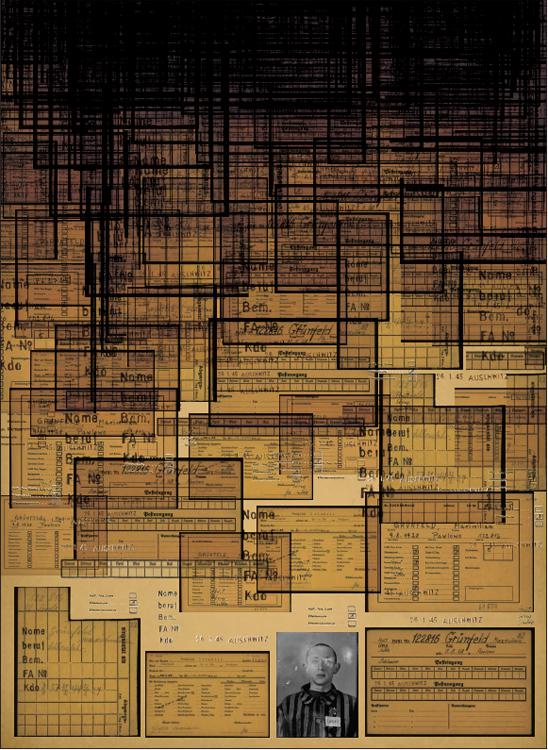
The legacy of the Holocaust is found, not only the stories of survivors, but also in the meticulous documentation of the concentration camps. These bits of paper give us tiny glimpses into the lives of individuals who may no longer have a voice to tell their own story. As we collect, sort and archive the documents which keep the memory of alive, we are looking for the individual stories to help us understand each unique journey through the Holocaust.

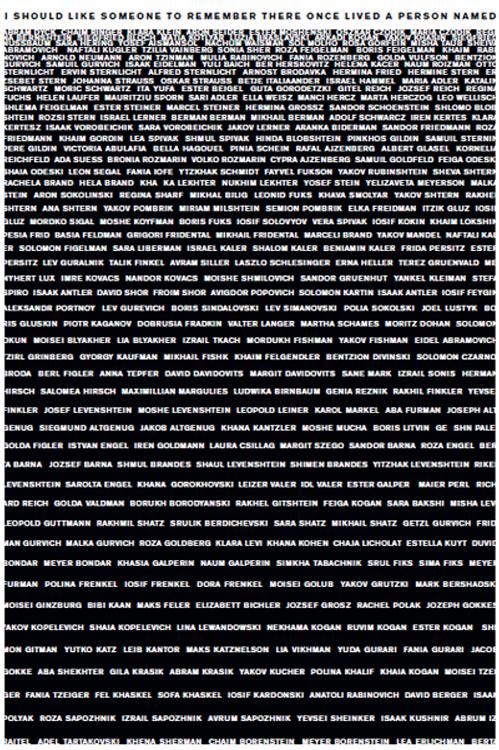
The composition is a type of monument - I could do an entire exhibition designing the “art of these names,” and honoring them as such. The contrast of white on black exemplifies the drama, the tightened lettering and tracking of the type at the top almost mirrors the sense of urgency (whether it was to get onto a train, or the urgency to be remembered), and as the names loosen and space out more and more it just leaves room for so many more names. The list is ongoing, and the journey to recover them helps us honor the entire lives of these people.

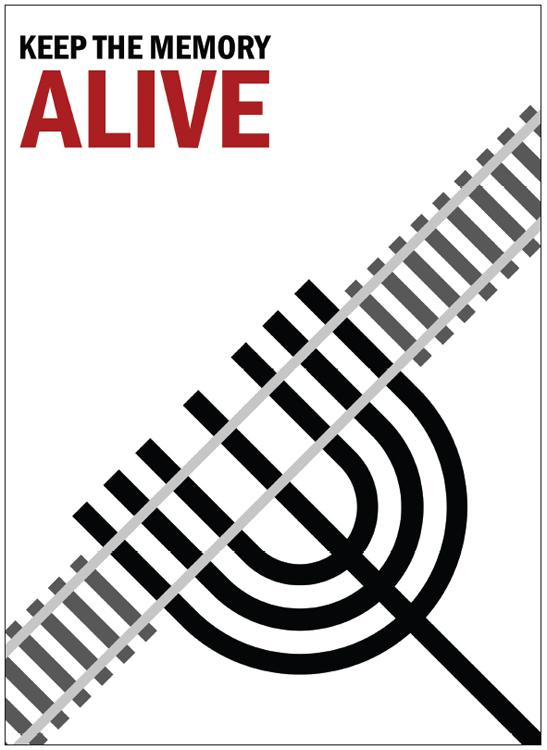
I have combined the Jewish Menorah symbol with the metaphorical image of the train track, representing the terrifying journey to the death camps. A train can only journey on the tracks that are laid for it; similar to the many Jews forced to make the Journey to concentration camps.
Additionally I have made the track’s beginning and end off of the page to represent that despite persecution and suffering, from any time period, the Jewish journey prevails, almost to say that it is without beginning or end. I have used black, white and grey to represent the lack of clarity in memories with the bold red representing the lucidity of memories that have more impact on an individual.

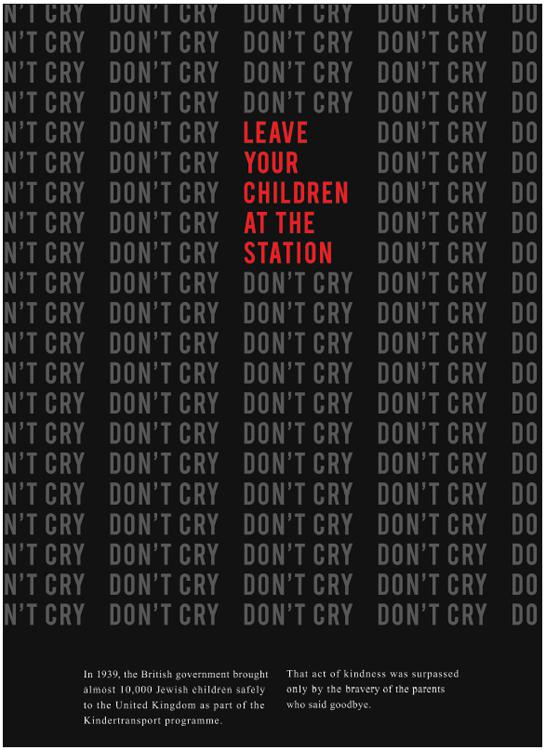
In 1939, the British government brought almost 10,000 Jewish children safely to the United Kingdom as part of the Kindertransport programme. That act of kindness was surpassed only by the bravery of the parents who said goodbye.
This poster is in honor of all those parents, and its aim is to educate those who might not know about the uplifting bravery that also occurred amidst the atrocities of the Holocaust.

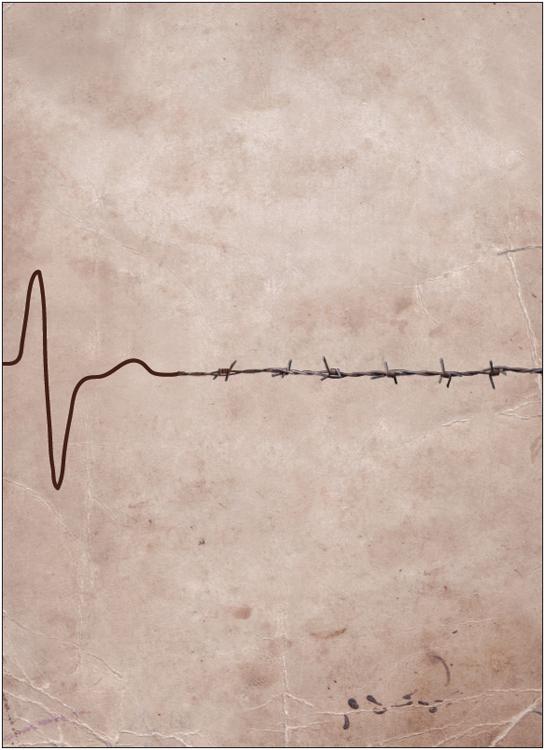
The pulse reflects a heartbeat. If the heart beats it means that a human is alive. The life of a normal human being is symbolized by a vibrant line. This line ends with a straight line of barbed wire which presents the cruel death of many innocent people during the Holocaust. The reason I used the barbed wire was that wire was used on the fences of concentration camps.

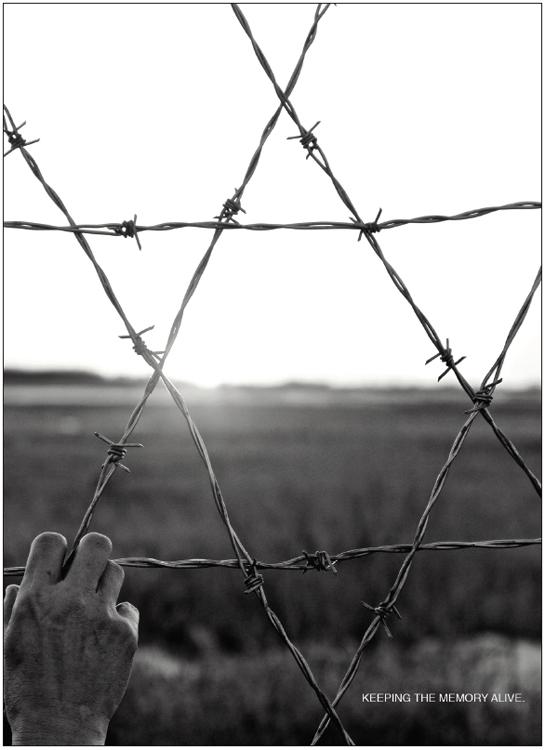
The concept behind the poster is to see things from the perspective of a prisoner in the Holocaust. The scene captures a beautiful horizon with a diminishing sunset, when in reality there was nothing beautiful about that period in time. The barbed wire represents imprisonment and outlines the Star of David to distinguish the historical context, while the hand represents the prisoner and lays rest upon the wire to appear defeated. Minimal text was included as the poster was meant to be self-explanatory and easily readable through image alone.

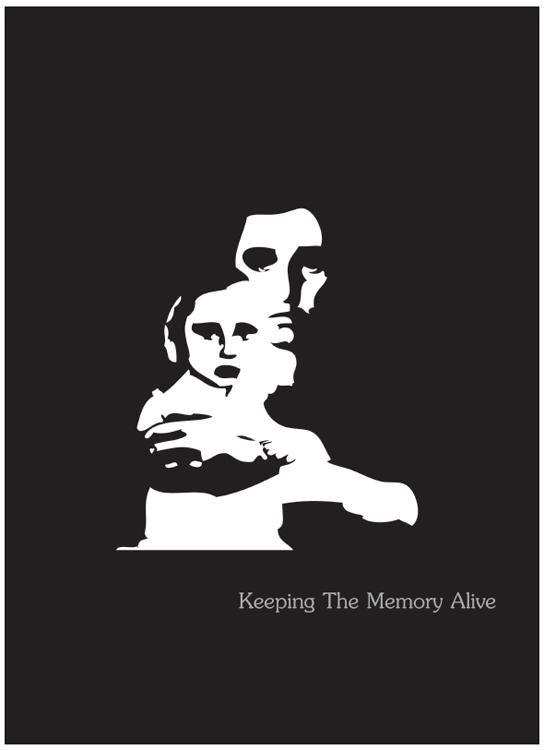
The Holocaust - the greatest tragedy of the Jewish people, affected innocent people. This inhuman crime committed by men against innocent people, include children and women. Any death is a tragedy. Any soldier wants to live and hopes to survive. But his role through the war is to fight and to be killed. And only the children and their mothers were the innocent victims of the war. Millions of Jews – among them. Let us keep this in mind and do not forget. Let us respect each other and reject violence, racism and hatred.

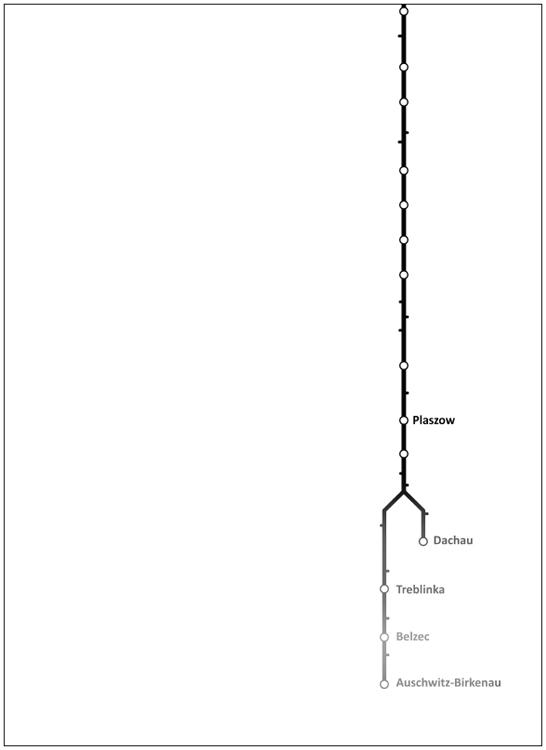
I wanted to create a simple and poignant design, which will make people think about the Holocaust in relation to their own lives. I have used the recognisable London Underground map as a concept but exchanged the stations for death camps. The end of the line fades to signify the dreadful end to the journey.
I can imagine this poster campaign having added emphasis as an underground poster campaign to make people stop and think a little as they travel home after work about the 6,000,000 Jews that met their end.
This should never be forgotten.

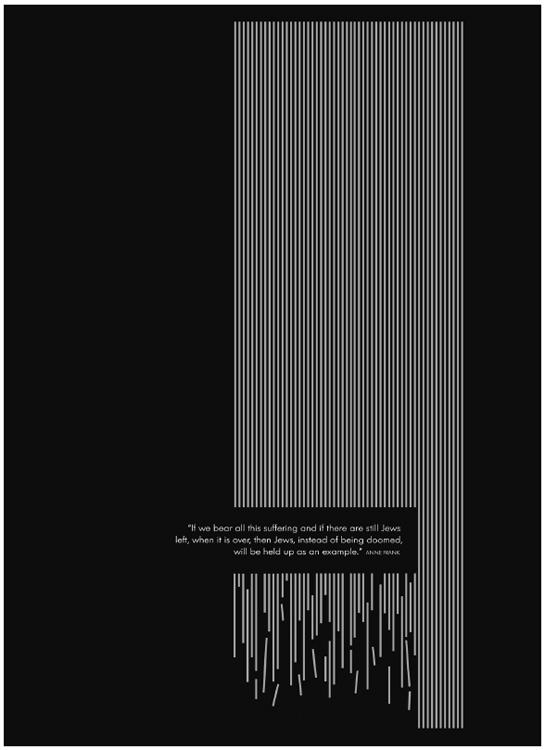
The lines represent the Jewish people and their history. When the lines reach the Holocaust most of them break and shatter, leaving only a few to make it to the other side. The geometric approach speaks to the way the genocide was carried out in a structured manner. The piece speaks with optimism for the future, while never forgetting the Holocaust in our past.

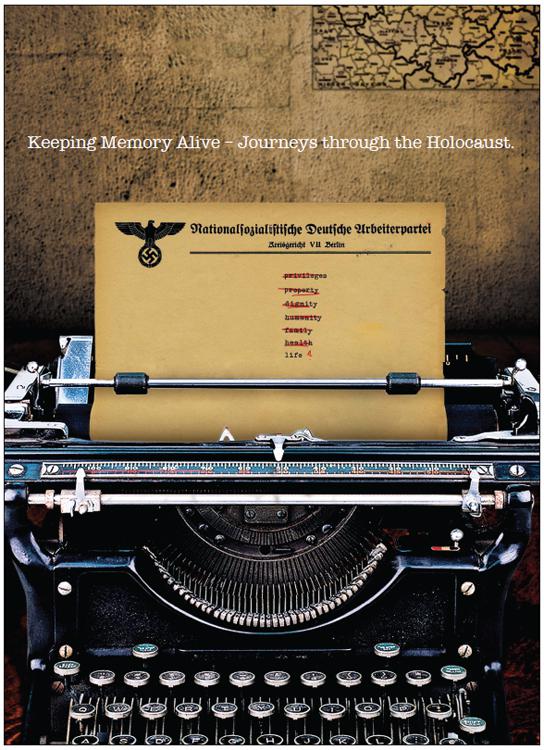
The design of the poster is based on the brutality of the "Final Solution of the Jewish question". Written words describe the journey of the Jewish community.

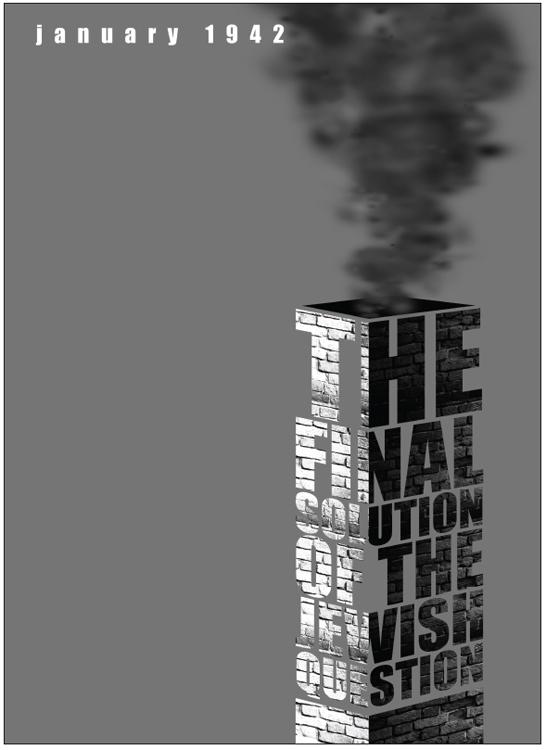
The inscription «Final Solution of the Jewish Question» is designed as the crematorium’s chimney at a death camp. «January, 1942» written in the upper left corner is the date when the project was approved at the Wannsee Conference. It was the start of mass deportations of Jews to death camps. This conference lasted several hours, and condemned millions of people to death; the victims of the Holocaust.

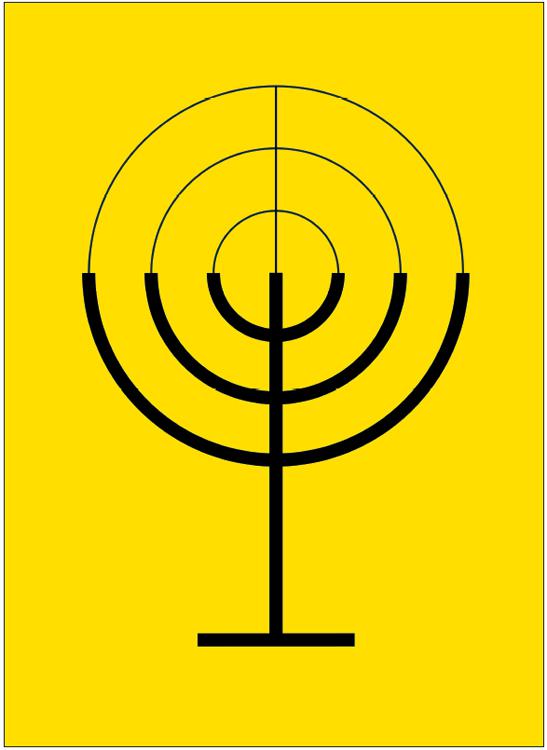
I was creating the topic of Journeys by depicting footprints in a march; these happened at the end of the war and were called Death Marches. These marches were another way of killing prisoners. I introduce this theme by creating the image of a human foot. One footprint shows a disappearing Jewish star. The concept can be interpreted as traces Holocaust left in the mind of people and also in their hearts.

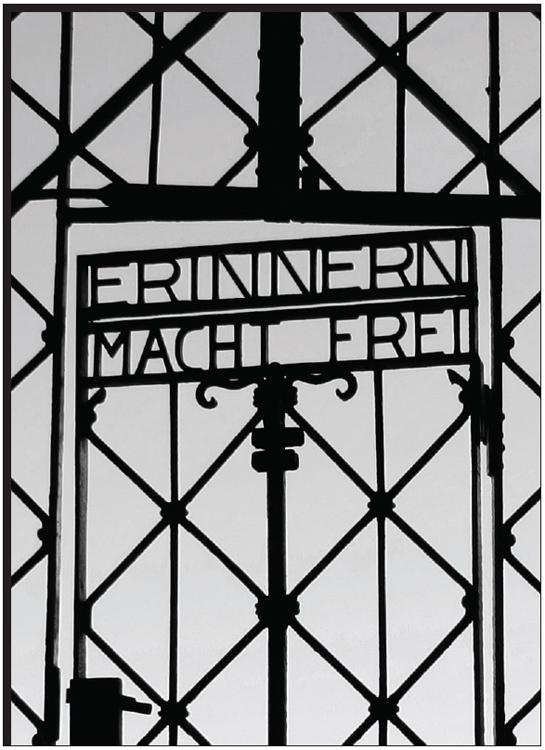
The poster is a photomontage of the well-known sign on the entry gates of Dachau concentration camp. Instead of original infamous statement ‘Arbeit macht frei’, which means ‘Work makes free’, I changed the word ‘Arbeit’ for ‘Erinnern’, which means ‘Remembrance’. In this way I wanted to emphasize that the gates of history must never be closed and horrible things forgotten ... but in the same way only walking through the doors leads us to recognition.

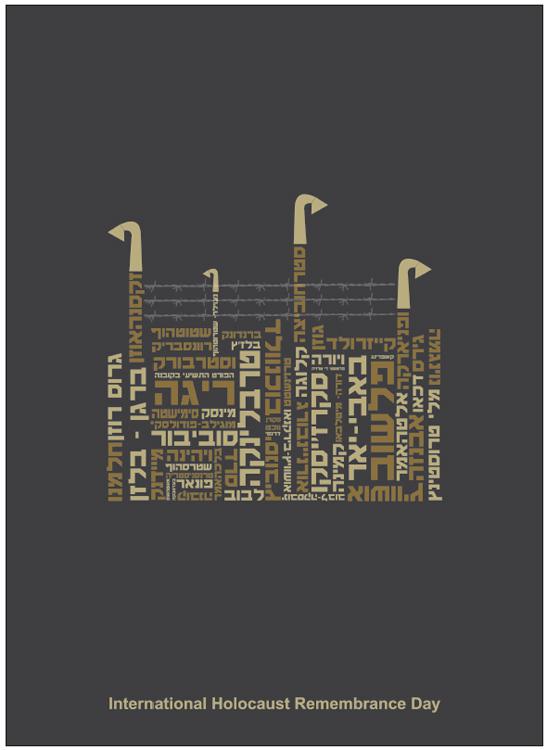
The names of all 56 concentration camps appear on the poster in Hebrew letters. Today, some camps are better known, others much less. Along with this, I gave the same weight, name and design to every camp - because these places were determiners of life and death for all those who were there and survived, those who were there and remained silent in their testimony, to their families, to all of us.
The union of names creates a monument of belonging, of the individual among the collective, each one's story in the book of Jewish history and mankind. I related to each camp as a graphic object bearing the same presence, disregarding the number of references to it in the history books, its size or the number of its victims, integrated into Hebrew script letters: stiff squares with angular corners and sharp connections, like the bricks of the Wailing Wall in Jerusalem. Those I fused with barbed wire in a simple, clean design, with the intention that this simplicity would enable the viewer to catch some of the debris from the horrors that took place, void of any humanity.

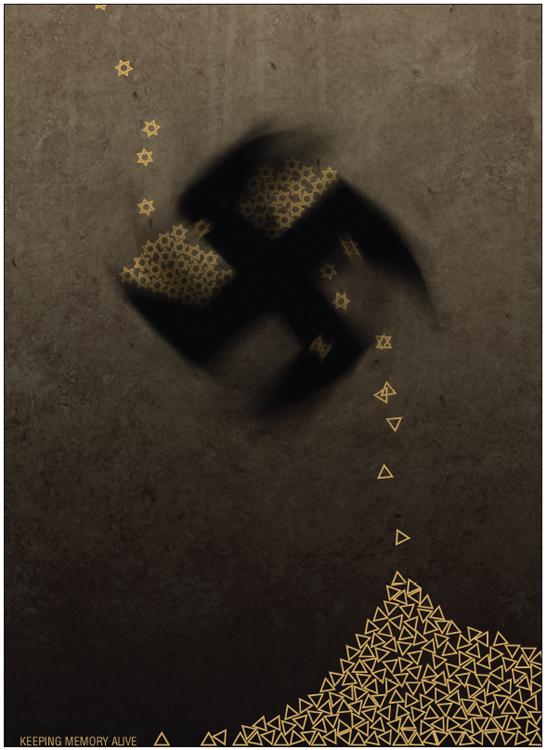
The main motif of this poster is the swastika symbol in a spinning motion which aims to evoke a picture of a mill, wheel, or a grinder. We see tiny Jewish stars (representing individual people) falling from the left corner into this evil machine. They come out as single triangles – nothing compared to their former shape – dead or completely devastated. The poster symbolizes the victims of the Holocaust and the horrors they went through.

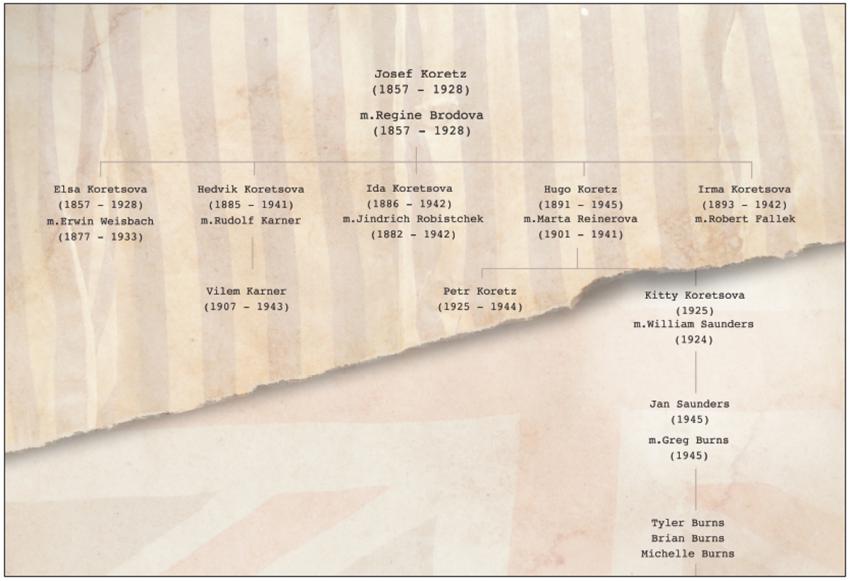
Hermann’s story left us with a message of hope. Although the Nazi movement is one of the darkest times in human history, glimmers of compassion and bravery shine though. Kinder transport is a beautiful example of this. Without this initiative Hermann wouldn’t have survived and lived a full happy life.
In this poster we pay tribute to those who sacrificed themselves to help others. And who brought a culture to England that has influenced it ever since.







